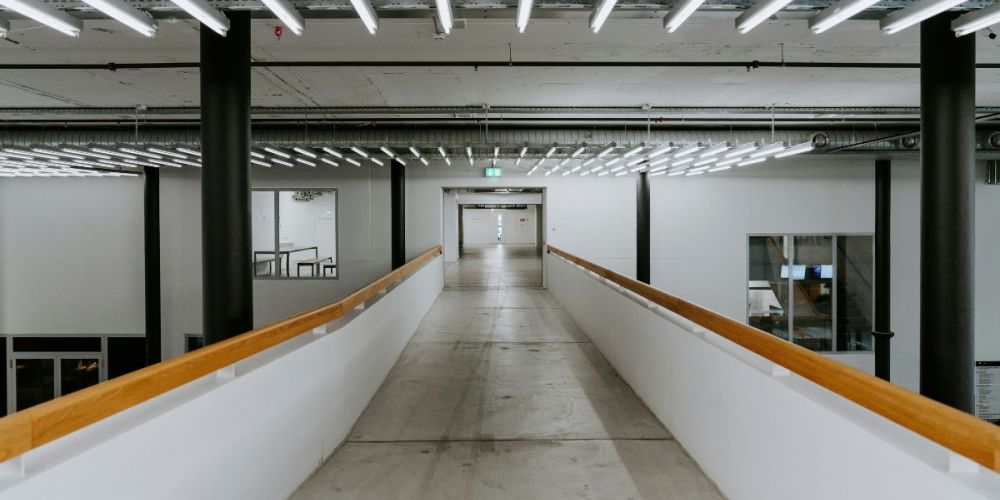
The Future of Facility Management: Trends and Innovations to Watch in 2025
Facility management is evolving fast. With new technologies, rising sustainability demands, and increasing complexity in building operations, facility managers need to stay ahead of the curve. Leveraging modern facility management solutions can help organisations streamline processes, cut costs, and meet growing tenant expectations. As we head deeper into 2025, a number of facility management trends and innovations are emerging that will define the future of the industry.
This article explores what’s changing, what to expect next, and how modern facility management software and building management systems are transforming how buildings are managed.
1. Smart Technology and IoT Are Now Standard
The shift toward smarter buildings has accelerated in recent years—and in 2025, it’s no longer optional. According to recent reports, over 70% of facility managers in Australia and New Zealand are prioritising digital solutions that offer greater efficiency and oversight.
Smart lighting, HVAC systems, security, and energy monitoring tools are now being integrated with centralised platforms that allow facility managers to monitor everything in real time. These systems can help to reduce manual work, flag issues faster, and help cut operational costs through automation.
A JLL smart buildings report also highlights how smart technology is expected to drive up to 30% operational savings in commercial real estate in 2025.
Want to know what smart technology you should prioritise in your facility? Check out our guide here.
2. Sustainability and ESG Reporting Are Taking Centre Stage
Sustainability is no longer just a buzzword. In 2025, facility managers are expected to play a leading role in delivering on ESG (Environmental, Social, and Governance) goals. Whether it’s tracking energy usage, managing waste reduction strategies, or reporting on emissions, facilities teams are now responsible for collecting and presenting accurate environmental data from their buildings.
This is where facility management software plays a crucial role. Tools like MYBOS can enable you to consolidate your reporting, track usage over time, and generate reports that support compliance with local regulations and company goals.
A McKinsey & Company article also emphasises the role of facility management in achieving corporate sustainability goals, citing the growing impact on business strategy and performance.
Learn how facility management software will help you with these three issues commonly faced by building managers.
3. The Rise of Predictive Maintenance
Facility maintenance is increasingly moving from reactive to predictive. Instead of waiting for assets to break down, facility managers are now using data-driven insights to schedule proactive maintenance before issues arise – saving on unplanned repair frees or having to suddenly replace a faulty asset altogether.
An asset management system can track building equipment performance, detect anomalies, and trigger alerts that help teams respond before downtime occurs. This not only extends asset life, but also helps prevent costly emergency repairs.
Research from Deloitte shows predictive maintenance can reduce costs by 20% and unplanned outages by 70% over the course of an asset’s lifetime, underlining its rising importance in facility operations.
Want to improve your maintenance operations? Explore how facility maintenance software can help.
4. Mobile-First, Cloud-Based Solutions
In today’s fast-paced environment, facility managers aren’t sitting behind desks—they’re onsite, moving between buildings, and managing remote teams. That’s why mobile-friendly, cloud-based platforms that can be used from multiple devices have become essential. A recent article by IFMA also points out that mobile platforms are now considered a necessity in a world where remote facility management is becoming the norm.
With tools like MYBOS, you can manage work orders, communicate with staff and tenants, and access critical building data from any location. This flexibility ensures that decisions can be made quickly, tasks get done faster, and team collaboration improves.
5. Doing More with Less
Labour shortages and budget constraints are pushing facility teams to get creative with their management solutions. In 2025, automation will continue to play a larger role in helping facility managers accomplish more with fewer resources.
Automated workflows, recurring task schedules, and streamlined communication tools can allow teams to stay productive even when operating lean. The focus is on efficiency—cutting redundant processes and eliminating wasted time.
Read our article on the most effective ways to improve operations in your facility.
6. AI, Analytics, and Data-Driven Decision Making
Facility management is becoming more strategic as time goes on and technology becomes more ingrained in our everyday operations, and data is key. In 2025, facility managers are increasingly expected to make data-backed decisions—from capital planning to energy usage to staffing.
Modern facility management software offers analytics tools that make this easier. These platforms can visualise trends, highlight inefficiencies, and help teams prioritise improvements that offer the greatest return.
According to Facilities Dive, AI-based analytics and automation are now among the top priorities for facility managers, helping to unlock smarter long-term strategies. In addition, another report confirms that top-performing platforms in 2024 already integrate AI-driven features to support operational and energy management.
7. Cybersecurity and Data Protection
With all this system and data connectivity, cybersecurity has also become a growing concern. In 2025, facility managers must work alongside IT teams to ensure that building management systems and IoT devices are secure from breaches.
Common threats in the facility management space include ransomware attacks, unauthorised access to building systems, and data leaks from poorly secured IoT devices. For instance, a 2023 cyberattack on an Australian property firm highlighted how vulnerable integrated systems can become when proper safeguards aren’t in place. As reported by ITNews, the attack disrupted services across a high number of managed properties, drawing attention to the urgent need for robust cybersecurity protocols in the industry.
Facility management software vendors are responding with stronger security protocols, including multi-factor authentication, encryption, and access controls to ensure sensitive building and tenant data stays protected.
Looking Ahead: Adapting to the New Facility Management Landscape
2025 is shaping up to be a year of transformation in facility management. From smart building innovations to ESG reporting and predictive maintenance, facility managers are facing a new set of expectations, and opportunities.
Whether you’re managing a single property or a large portfolio of buildings, embracing modern tools like facility management software and building management systems can improve efficiency, reduce costs, and enhance tenant satisfaction.
As always, the key is to stay informed, stay adaptable, and choose tools that grow with your needs.
Curious about how MYBOS can help? Book a demo today and see how we can support your facility management goals in 2025 and beyond.




